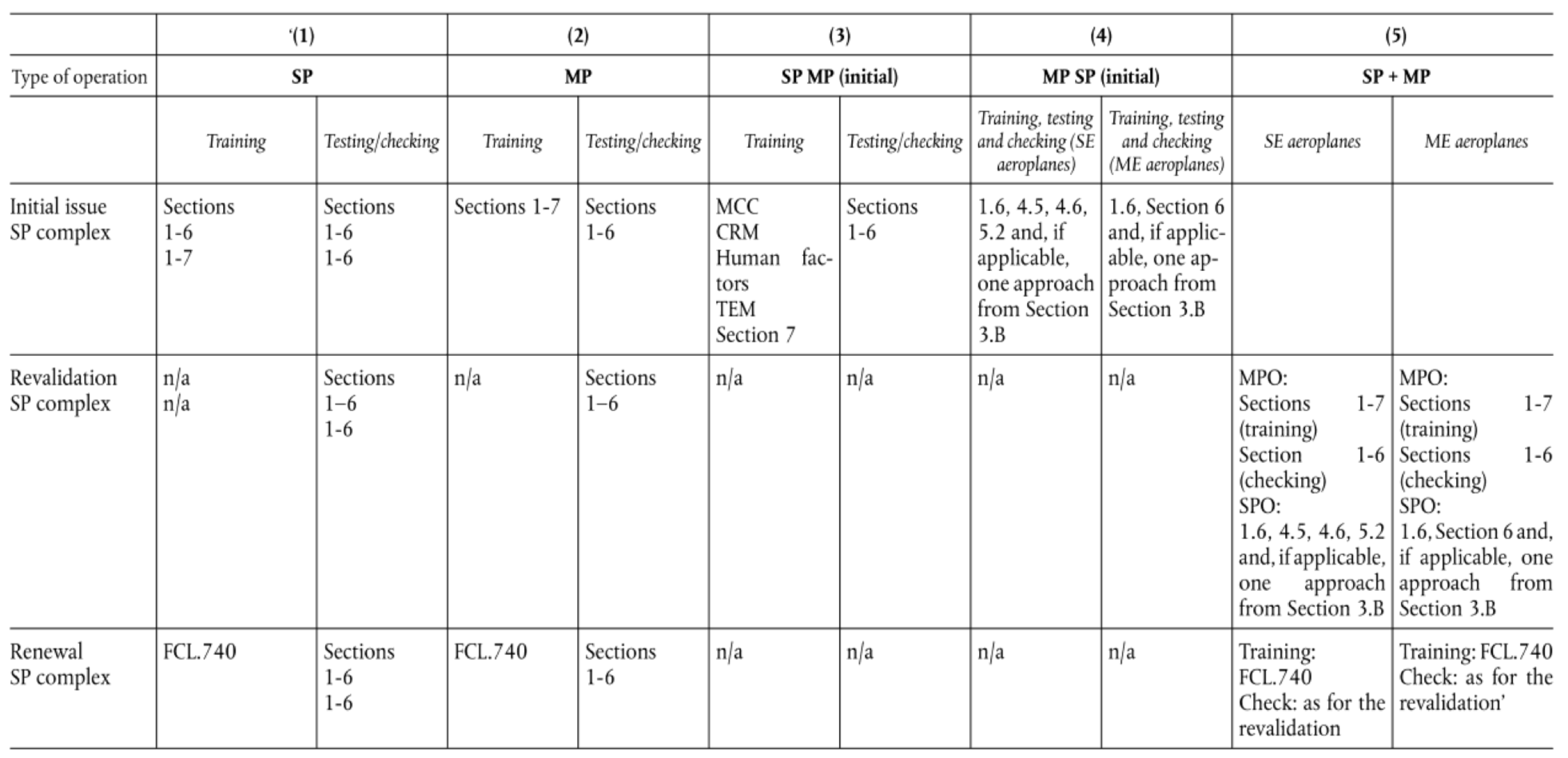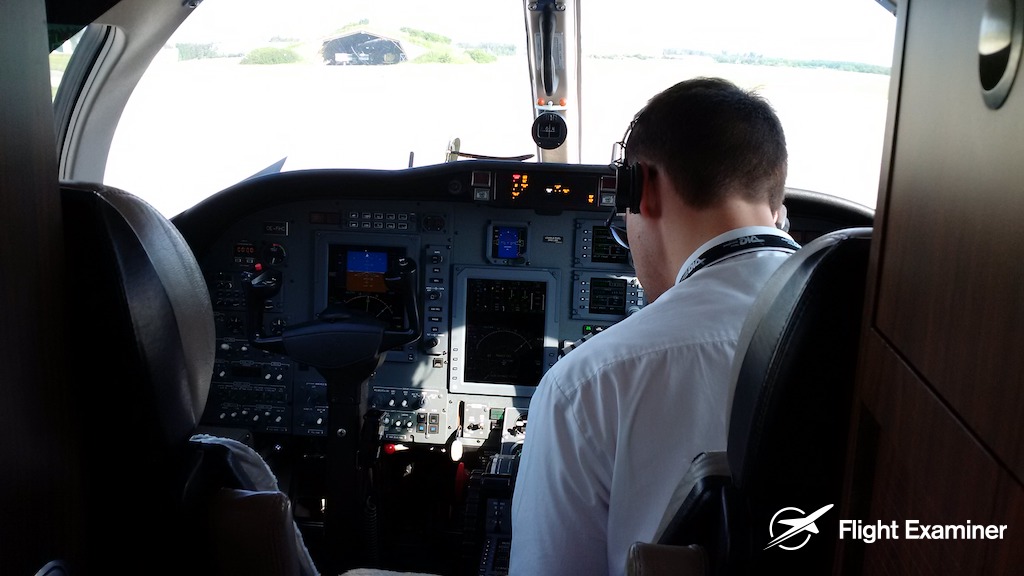Cessna 525 operation was a big topic...
In the past, the means of so-called single-pilot aircraft of high performance, the so-called HPA - High performance airplanes and in particular Cessna 525 operation was widely discussed topic. With introduction of Part FCL, the high-performance single-pilot complex aeroplane together with single pilot and multi pilot operations was established. Requirements for flight training are described in Part FCL, Appendix 6(B)(5)(k) and in Operational Suitability Data Cessna 525.
Part-FCL established the flight training for different Cessna 525 privileges on competency-based concept:
- obtain of Cessna 525 - single-pilot operations SPO
- obtain of Cessna 525 - multi-pilot operations MPO
- extension of privileges - multi-pilot operations for single-pilot operations holder
- extension of privileges - single-pilot operations for multi-pilot operations holder
- flight training for both - single pilot and multi pilot operations

We provide the training for both options of the Cessna 525 operation means - multi-pilot operations and single-pilot operations.
Single pilot on Cessne 525
The Cessna 525 and all its variants certified as a single-pilot aeroplanes according to EASA TCDS. In private air transport concept - the so-called NCC Cessna 525 can be flown as single-pilot. The flight training requirements are provided in the table below. The scope of the type rating training depends on the previous experience in single pilot operations.
Qualification requirements

Flight Training requirements
- for initial issue of single pilot Cessna 525 type rating: attend Sections 1-7 Appendix 7
- for extension of MPO to SPO Cessna 525 privileges: attend Section 1.6, Section 6 and 1 approach of Section 3.B
The theoretical knowledge instruction shall be conducted by an authorized instructor holding the appropriate type / class rating or any instructor having appropriate experience in aviation and knowledge of the aircraft concerned, e.g. flight engineer, maintenance engineer or flight operations officer and shall cover the applicable syllabus, as appropriate.
Extension of privileges from MPO to SPO shall in addition contain:
- 4 hours of theoretical knowledge instruction
- SP psychology, decision making, communications and limitations;
- SP task, resource and workload management and personal organization;
- SP operation and management of avionics suite, including charts and ECL, as applicable;
- Differences between MP and SP Abnormal and Emergency procedures;
- Emergency Phraseology; and
- SP operations in icing conditions.
- 4 hours of flight training - in simulator or in aircraft
- Use and setup of GARMIN integrated avionics, PFD and MFD, including selection of display (System Synoptic, Map, Weather Radar and optional/ Electronic Check List );
- Use of Flight Director and Autopilot, monitoring of modes;
- Engine failure after take-off;
- In flight restart of failed engine;
- Operation of TCAS (if installed);
- Sequencing of CAS messages regarding subsequent/secondary failures;
- Loss of cabin pressure control and Emergency Descent procedures;
- Instrument flying on standby instruments;
- Failure of trim system;
- Smoke procedures, including smoke removal;
- Approaches/Landing with reduced flap setting;
- Approaches/Landing with failed engine;
- Engine Fire on the Ground;
- Emergency Evacuation; and
- Use of the ECL, if applicable.
Multi pilot on Cessna 525
Although the Cessna 525 is certified as a single-pilot aeroplane, the EASA TCDS type-certificate data sheet states that it is approved for both single-pilot or multi-pilot operations. Within the commercial air transport, the Cessna 525 can only be operated under the multi-pilot operations only. The reason is the requirement of Ec 965/2012 and its implementing rules. These specify the minimum number of qualified crew members with a type rating for each aircraft equipped with two jet engines.
Flight training requirements
- multi-pilot Cessna 525 type rating: attend Sections 1-7 Appendix 7
- extension of Cessna 525 privileges from SPO to MPO: attend Section 7 Appendix 7 and additional training in following areas:
- multi-crew cooperation training
- Crew Recource Management (as a part of Operator Conversion Course)
- Human Factors (as a part of Operator Conversion Course)
- Threath and error management (as a part of Operator Conversion Course)
Extension of SPO to MPO privileges:
MCC procedures should be defined in the operations manual and be introduced during the transition training.
- 4 hodiny of theoretical knowledge instruction:
- Multi Crew psychology, decision making, communications and limitations;
- Multi Crew task, resource and workload management and organization, procedures;
- MP operation and management of GARMIN, including ECL/optional and Charts;
- Differences between SP and MP Abnormal and Emergency procedures;
- Emergency Phraseology;
- MP operations in icing conditions.
- 4 hours of flight training - in simulator or aeroplane (2hrs PF and 2hrs PNF)
- Use and setup of GARMIN integrated avionics, PFD and MFD, including selection of display (System Synoptic, Map, Weather Radar and Electronic Check List);
- Use of FD and AP, monitoring of modes;
- MCC Procedures;
- Operation of TCAS (if installed);
- Sequencing of CAS messages regarding subsequent/secondary failures;
- Loss of cabin pressure control and Emergency descent procedures;
- Instrument flying on standby instruments;
- Smoke procedures, including smoke removal;
- Trim failure;
- Engine Fire on the Ground;
- Emergency Evacuation; and
- Use of ECL, if applicable.
Mixed SP and MP operations
Flight Training should also address aspects of mixed single pilot and multi pilot operations by the same pilot.

--
Look for a reliable Cessna 525 training provider. ProfiPilot Training is the professional flight school of your choice.


 Multi-pilot operations or single-pilot operations. With Cessne 525 Citation you can choose.
Multi-pilot operations or single-pilot operations. With Cessne 525 Citation you can choose.